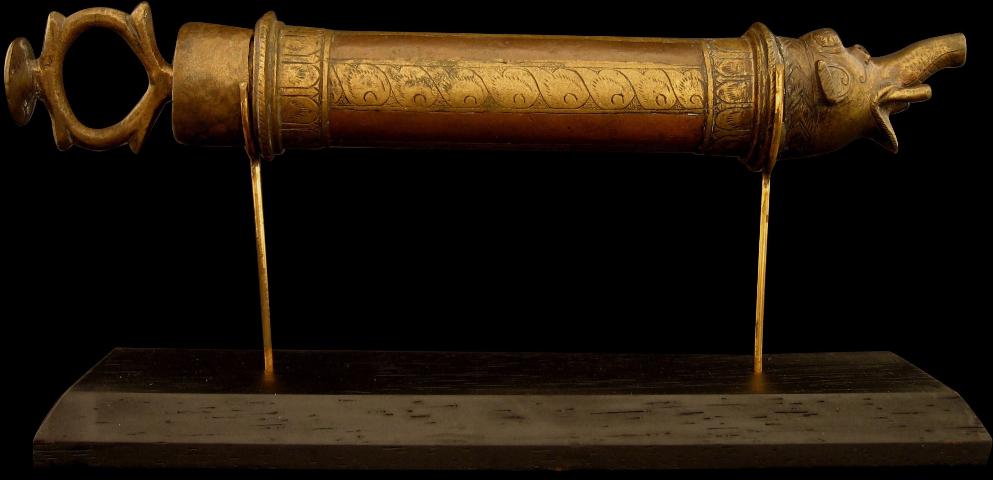
Antique Pichkari – Syringe for Holi, Hindu India
Brass and Copper Pichkari
(Syringe Pump for the Hindi Festival of Holi)
Rajasthan, India
late 18th century
length: 27.2 cm (without the plunger distended)
This pichkari is elaborately constructed with alternating bands of copper and brass. The barrel is engraved with petal designs. The nozzle is in the shape of an elephant’s head with ears, tusks and eyes that might have held precious stones. A small hole in the trunk allows for the exit of spray. The looped handle pulls in and out to make the pump action.
Pumps such as these were used during the Hindu Indian festival of Holi when revellers spray coloured water at one another.
Holi is a popular spring festival, also called the Festival of Colours that is celebrated around India. Bonfires are lit at night on the first day. It is on the second day, known as Dhulandi, that people throw or spray coloured powder and water on each other. People also invite one and other to their houses for feasts and celebrations late into the evening.
Originally, the colours used in the
pichkaris came from the flowers of trees that blossomed during spring, such as the Indian Coral Tree and the Flame of the Forest. Both have bright red flowers. Most of the blossoms used were also believed to have medicinal properties. No longer are beautifully made metal pumps such as the one here used today. Instead, cheap plastic pumps are used. Often they are bought from street stalls. No longer do they contain natural colours but pre-mixed industrial dyes.
Mumbai’s Prince of Wales Museum has a painting attributed to late 18th century Udaipur, Rajasthan, India which shows one maiden shooting a
pichkari at another and the form of the pichkari is almost identical to the example here, with the elephant nozzle being particularly prominent. (The painting is reproduced in Desai, K., Jewels on the Crescent: Masterpieces of Chhatrapati Shivaji Maharaj Vastu Sangrahalaya, Mapin, 2002, p. 105.)
Inventory no.: 450
SOLD





